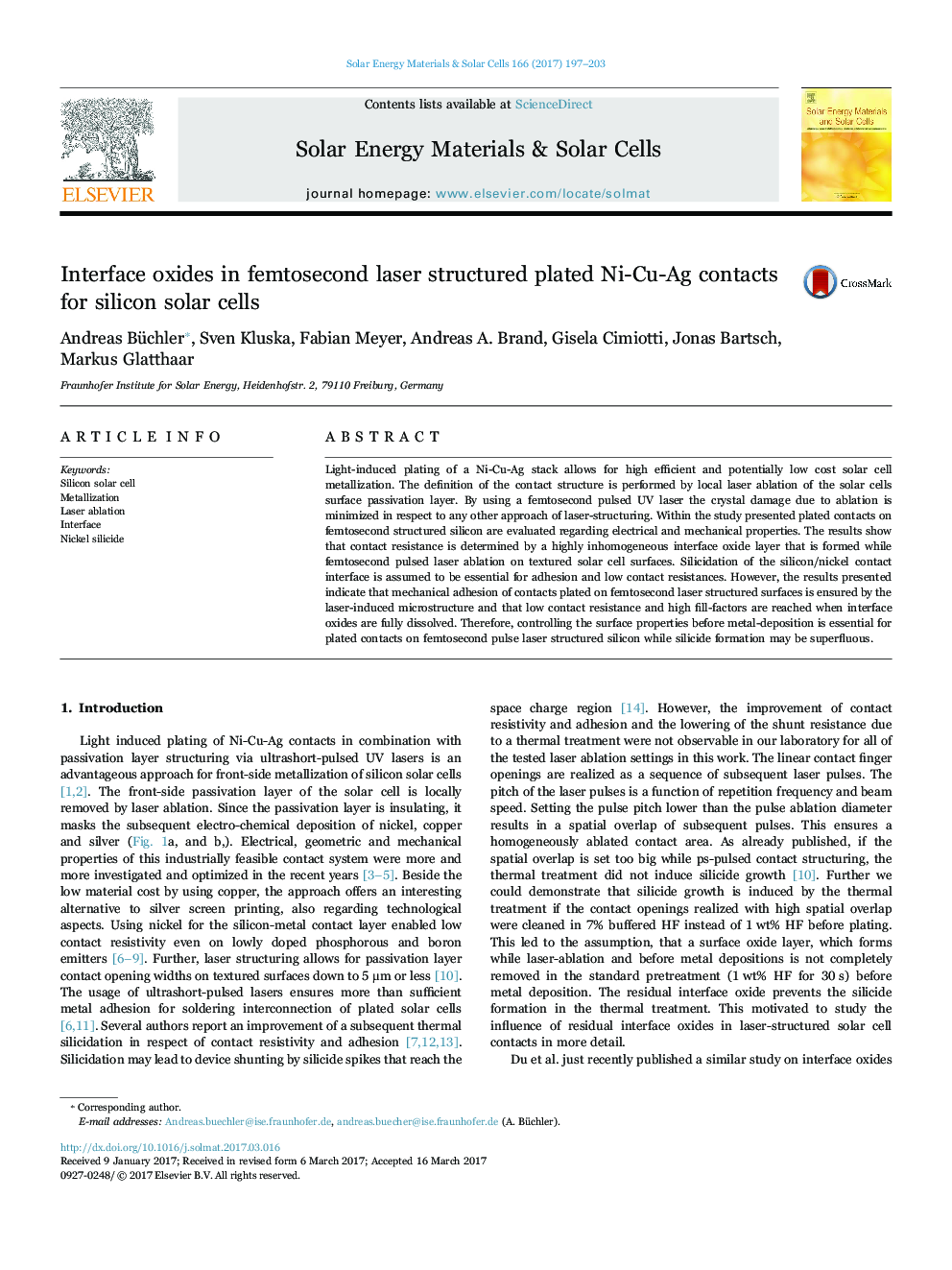| Article ID | Journal | Published Year | Pages | File Type |
|---|---|---|---|---|
| 4758850 | Solar Energy Materials and Solar Cells | 2017 | 7 Pages |
Abstract
Light-induced plating of a Ni-Cu-Ag stack allows for high efficient and potentially low cost solar cell metallization. The definition of the contact structure is performed by local laser ablation of the solar cells surface passivation layer. By using a femtosecond pulsed UV laser the crystal damage due to ablation is minimized in respect to any other approach of laser-structuring. Within the study presented plated contacts on femtosecond structured silicon are evaluated regarding electrical and mechanical properties. The results show that contact resistance is determined by a highly inhomogeneous interface oxide layer that is formed while femtosecond pulsed laser ablation on textured solar cell surfaces. Silicidation of the silicon/nickel contact interface is assumed to be essential for adhesion and low contact resistances. However, the results presented indicate that mechanical adhesion of contacts plated on femtosecond laser structured surfaces is ensured by the laser-induced microstructure and that low contact resistance and high fill-factors are reached when interface oxides are fully dissolved. Therefore, controlling the surface properties before metal-deposition is essential for plated contacts on femtosecond pulse laser structured silicon while silicide formation may be superfluous.
Related Topics
Physical Sciences and Engineering
Chemical Engineering
Catalysis
Authors
Andreas Büchler, Sven Kluska, Fabian Meyer, Andreas A. Brand, Gisela Cimiotti, Jonas Bartsch, Markus Glatthaar,
